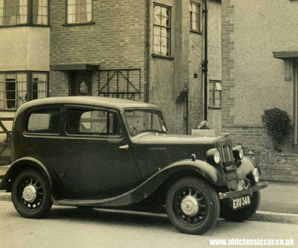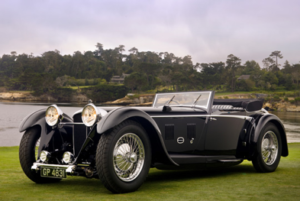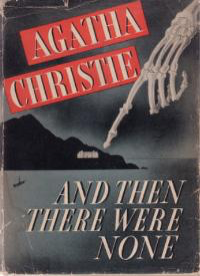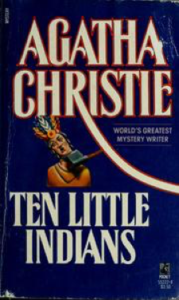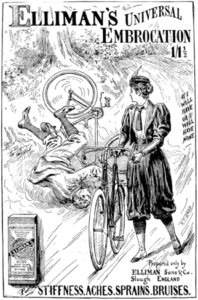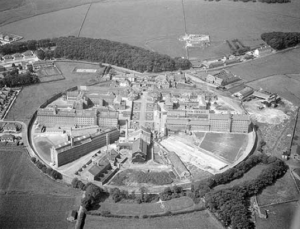
Poirot Score: 88
And Then There Were None
☆☆☆☆☆
Reasons for the Poirot Score
Why so low a score, you might ask? This is Christie’s best selling book and one of the biggest selling novels of all time. It was probably her own favourite. It is one of her most original, and it has influenced many writers since. It is supremely entertaining: the sense of menace brilliantly conceived as the ten island guests are killed one by one, each death linked to the verse of the nursery rhyme. So it is worth a very high score. But there are two reasons why we have not ranked it right at the top. First it is not well clued. Perhaps it is unfair to judge this novel by the criteria of a whodunnit since it is more like a locked-room thriller, but our Poirot Score criteria give considerable weight to the quality of the clueing. Second, there are significant improbabilities – almost impossibilities – that are needed in order to sustain the plot.
Click here for full review (spoilers ahead)
Trivia
Super-Sports Dalmain
With a devastating ear-splitting blast on the horn an enormous Super-Sports Dalmain car rushed past him at eighty miles an hour. Dr Armstrong nearly went into the hedge. One of these young fools who tore round the country. He hated them. [Chapter 1]
Dr Armstrong drives a mere Morris – probably a series 8. Christie’s first car was a Morris Cowley, bought with the royalties from The Mysterious Affair at Styles. Morris Motors was one of the major British car manufacturers of mainly family cars until the 1980s. A subsidiary built small sports cars under the name MG (Morris Garages) in Abingdon, ten miles south of Oxford. The company was founded by William Morris – later Lord Nuffield – and the cars were built at Cowley in Oxford. In 1959, a few years after its merger with the Austin Motor Company (to form the British Motor Corporation – BMC), the iconic Mini started production at Cowley. The BMW-owned MINI is now manufactured there. Lord Nuffield made several endowments to the University of Oxford, including a number in clinical medicine that were crucial in establishing the clinical school.
But what of the Super-Sports Dalmain driven by the reckless Adonis, Tony Marston? There appears to have been no such make of car. Christie quite often makes up names that are based in some way on a real name. For example the Blitz and Harridge’s hotels in The Secret of Chimneys – thinly disguised references to the real Ritz and Claridge’s hotels. My guess is that she made up the name Dalmain, basing it on the real car Daimler. The Daimler Motor Company Limited was one of Britain’s first car manufacturing companies, having historical links with Germany’s Mercedes-Benz. It became one of Britain’s major luxury car-makers, the name second only to Rolls-Royce, and on a par with Bentley, as synonymous with quality and comfort. After a series of take-overs it became part of BMC in the 1960s, and a stable-mate of Morris. The company still exists, owned, like Jaguar, by the Indian Tata group, although it is not currently trading.
There was no Super-Sports Daimler, and Christie may have taken the Super-Sports name from the Mercedes-Benz SSK (Super Sport Kurz). The picture shows a 1931 Daimler with coachwork by the small London company, Corsica Coachworks – perhaps similar to what Christie had in mind for Tony Marston.
Ten Little Soldier Boys rhyme
The origin of the rhyme appears to be closely associated with Minstrel shows. These developed in the US as popular shows involving dance, song and comedy. They were performed by mostly white people in blackface makeup and involved many stock black characters, including happy slaves. The rhyme was probably written in the late 1860’s, either by Septimus Winner (with ‘Injuns’ instead of ‘soldier boys’) or by Frank Green (which is the name given in my copy of the book), as a song for minstrel shows. It was the Frank Green version that became well known in Britain perhaps through the minstrel shows brought to London and elsewhere by the Christy Minstrels. The original title of the book reflects that version of the rhyme, a version that was still widely known when I was growing up in London in the 1950’s. The first US edition of Christie’s book (1940) used the current title. In Britain the novel was published under the original title until the early 1960s. In the US it was sometimes called Ten Little Indians – the title also used in the 1965 film – although the earlier 1945 movie used the original US title. Since the 1980s the title has settled as: And Then There Were None.
A Cairngorm Brooch
Rising, she [Emily Brent] pinned a cairngorm brooch at her neck, and went down to dinner. [Chapter 2]
Strictly speaking there is one mountain called Cairngorm but it has given its name to one of the highest ranges in Scotland – the Cairngorms, located to the West of Aberdeen. A particular variety of quartz, known as Smoky Quartz, was mined in these mountains and from the seventeenth century was used in items of Highland costume such as in kilt pins, dirk pommels and brooches. The gem’s colour ranges from nearly black through brown to yellow. Smoky Quartz is no longer mined in Scotland; Brazil is currently the major source.
Cascara, Elliman’s
Armstrong went over to the washstand. There were a certain number of bottles on it. Hair lotion, lavender water, cascara, glycerine of cucumber for the hands, a mouthwash, toothpaste and some Elliman’s.
Cascara, or cascara sagrada (sacred bark) is a laxative. It is extracted from the bark of the Californian buckthorn. Elliman’s refers to Elliman’s Universal Embrocation – a rub to ease aching muscles and joints. It is made from egg, turpentine and vinegar. It was invented by a draper, James Elliman, from Slough – to the West of London – and sold for human use from 1850. Elliman spent half his profits on advertising with the initial slogan: An excellent good thing. Elliman’s was still a family business in 1939. It was taken over by Horlicks in 1961 and the embrocation was, at least until recently, made by GlaxoSmithKline.
Penal servitude
Landor got penal servitude for life and died on Dartmoor a year later. He was a delicate man. [Chapter 4]
Penal servitude refers to imprisonment with labour. The labour might be useful, such as making fishing nets, or useless, such as the treadmill. The labour was part of the punishment. There were a series of Penal Servitude Acts in Britain in the nineteenth century. The Act of 1853 stopped the practice of transportation in which criminals were punished by being sent to live in one of the British colonies, and replaced tranportation with penal servitude. Penal servitude – that is labour as punishment – was abolished by the Criminal Justice Act 1948.
Dartmoor is a moorland area of Devon and still unusually remote in feeling for England. It is quite close to where Christie was brought up. Landor was a prisoner at Dartmoor prison (which plays a small role in The Sittaford Mystery) and presumably was carrying out ‘penal servitude’ near the prison on the moorland area when he died. The prison was built in the first decade of the nineteenth century to take French prisoners from the Napoleonic wars. It closed and then reopened in 1851 as a civilian prison. During the First World War it housed conscientious objectors to the war but was reopened as a prison in 1920. At the time Christie was writing it was notorious for keeping some of the most serious offenders. In 1932 there had been a prisoner mutiny. In recent years the prison has taken only non-violent offenders and it is not a high security prison.
Photos
Morris 8: [http://www.oldclassiccar.co.uk/morris_eight.htm]
Daimler sports car: http://pebblebeachconcours.net/pages/3003/Gallery.htm
First US Edition (1940)
Ten Little Indians book cover
http://markgordonpalmer.blogspot.co.uk/2013/02/ten-little-indians-1989-agatha.html
Cairngorm dirk: http://www.bexfield.co.uk/04/f320.htm
Elliman’s advertisement 1897: http://commons.wikimedia.org/wiki/File:Ellimans-Universal-Embrocation-Slough-1897-Ad.png
Dartmoor prison: http://viewfinder.english-heritage.org.uk/search/reference.aspx?uid=111541&index=396&form=advanced&county=DEVON


